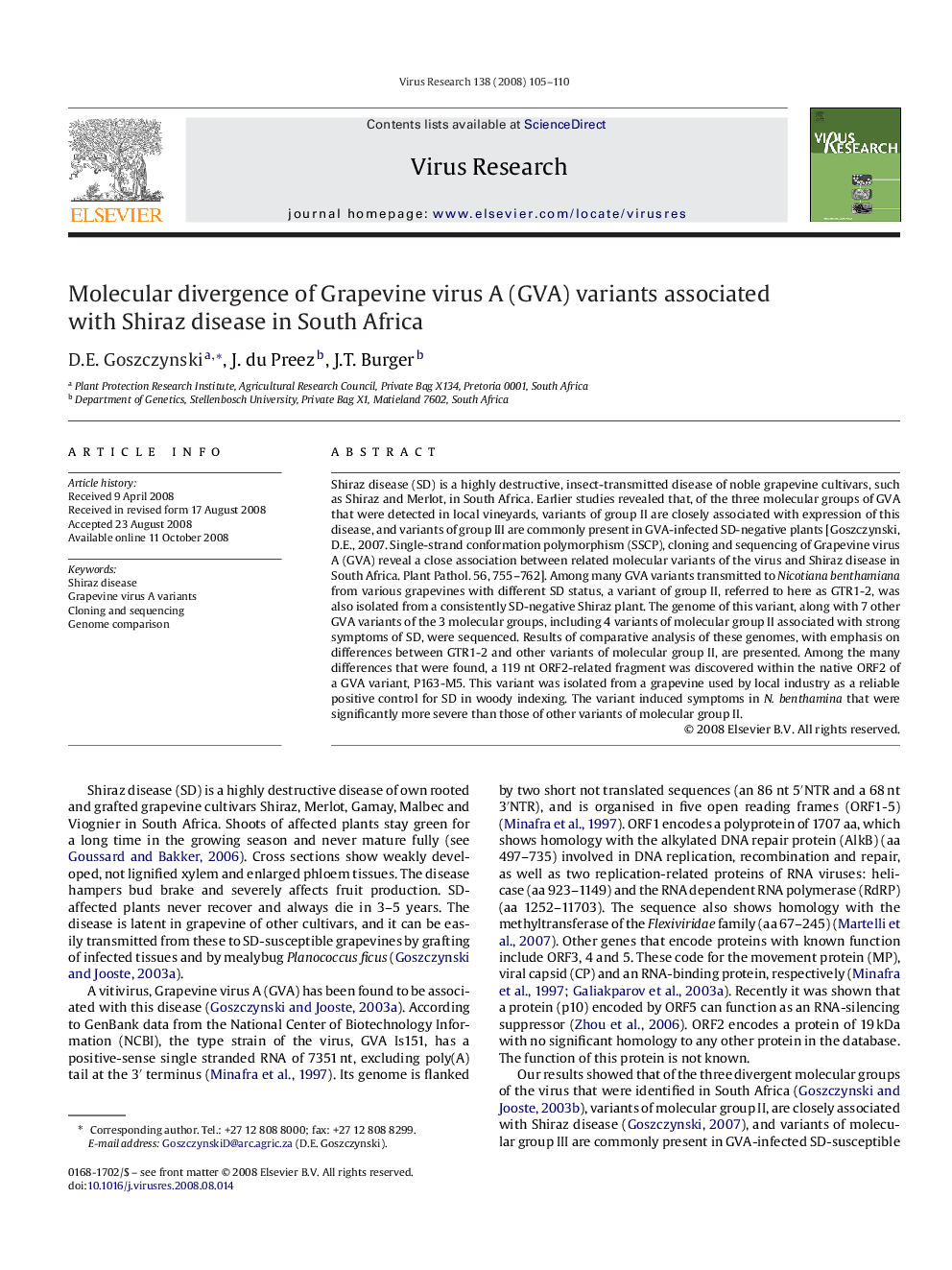| Article ID | Journal | Published Year | Pages | File Type |
|---|---|---|---|---|
| 3430402 | Virus Research | 2008 | 6 Pages |
Shiraz disease (SD) is a highly destructive, insect-transmitted disease of noble grapevine cultivars, such as Shiraz and Merlot, in South Africa. Earlier studies revealed that, of the three molecular groups of GVA that were detected in local vineyards, variants of group II are closely associated with expression of this disease, and variants of group III are commonly present in GVA-infected SD-negative plants [Goszczynski, D.E., 2007. Single-strand conformation polymorphism (SSCP), cloning and sequencing of Grapevine virus A (GVA) reveal a close association between related molecular variants of the virus and Shiraz disease in South Africa. Plant Pathol. 56, 755–762]. Among many GVA variants transmitted to Nicotiana benthamiana from various grapevines with different SD status, a variant of group II, referred to here as GTR1-2, was also isolated from a consistently SD-negative Shiraz plant. The genome of this variant, along with 7 other GVA variants of the 3 molecular groups, including 4 variants of molecular group II associated with strong symptoms of SD, were sequenced. Results of comparative analysis of these genomes, with emphasis on differences between GTR1-2 and other variants of molecular group II, are presented. Among the many differences that were found, a 119 nt ORF2-related fragment was discovered within the native ORF2 of a GVA variant, P163-M5. This variant was isolated from a grapevine used by local industry as a reliable positive control for SD in woody indexing. The variant induced symptoms in N. benthamina that were significantly more severe than those of other variants of molecular group II.
